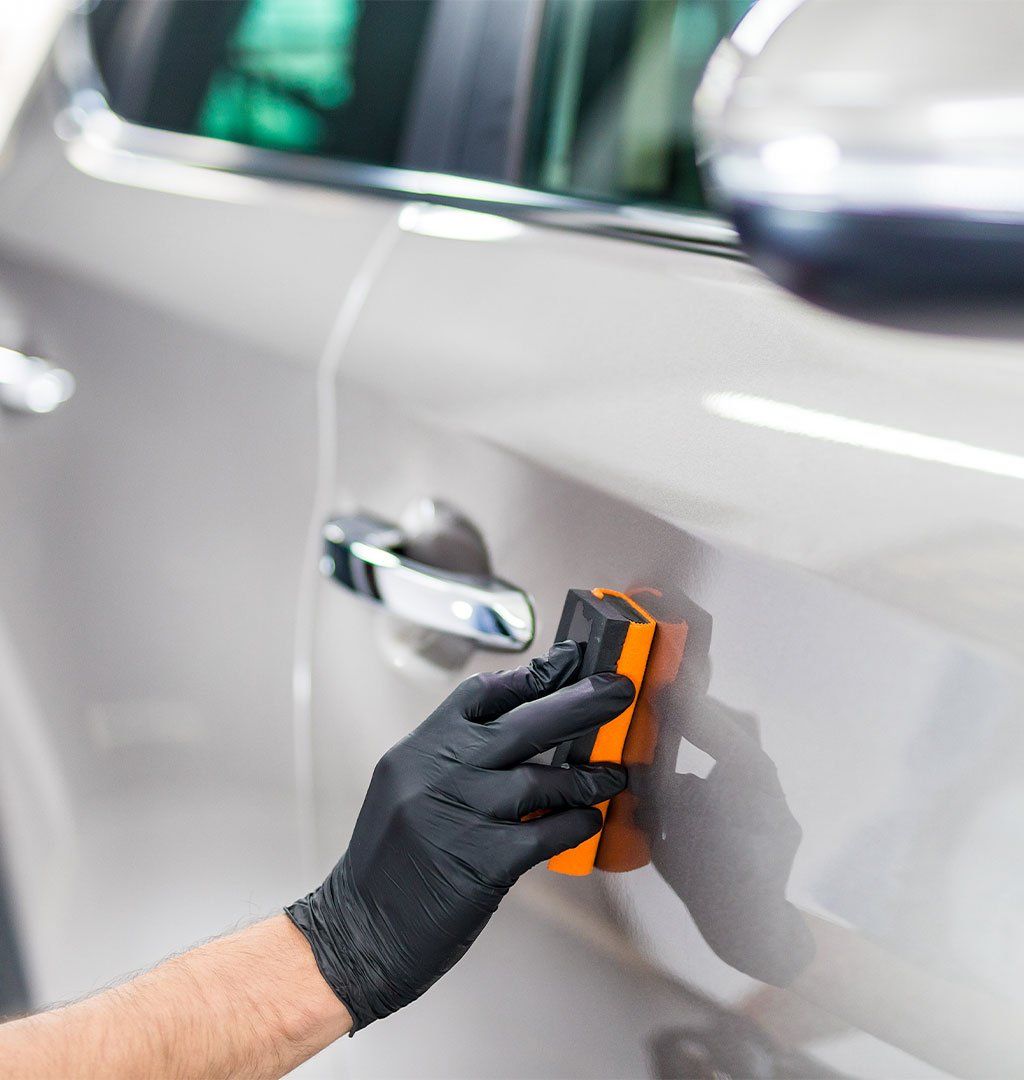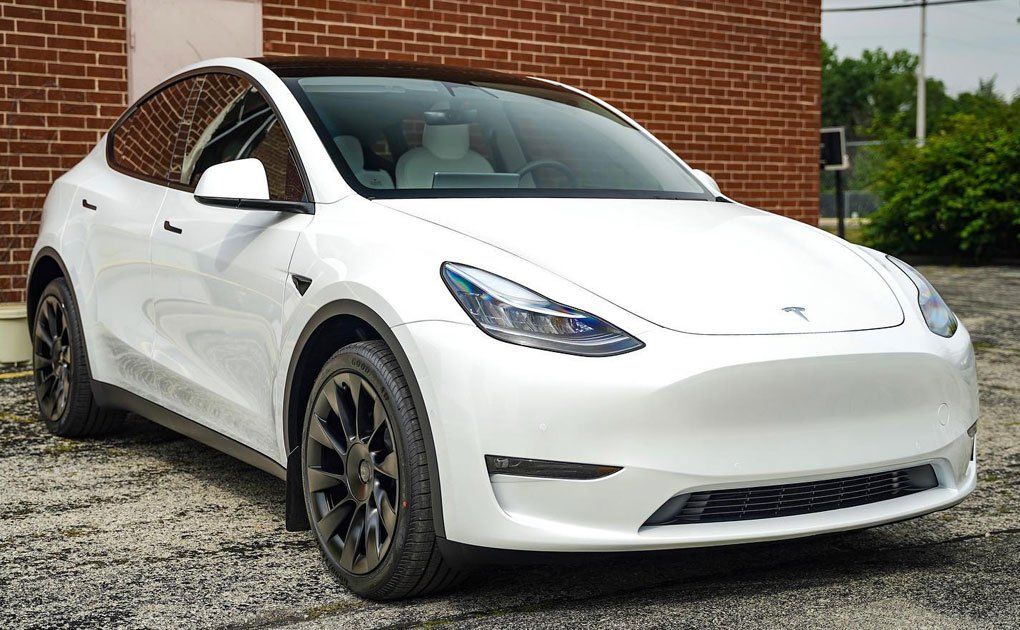Why Heat Curing Is a Game-Changer in Ceramic Coating Application
CALL (708) 574-8496
GET A FREE ESTIMATEWhen it comes to paint protection, the choice between traditional waxing and modern ceramic coatings can be challenging. However, ceramic coatings clearly stand out for their durability and long-lasting shine. When combined with heat curing, they provide superior defense against UV rays, contaminants, and surface damage—making them a highly effective solution for long-term vehicle protection.
Heat curing significantly improves the bonding process of ceramic coatings, resulting in a deeper and more durable finish that provides superior protection against environmental contaminants and UV rays. This method not only extends the lifespan of the coating but also decreases the frequency of reapplication when compared to traditional waxing, thereby revolutionizing vehicle maintenance.
The Science Behind Heat Curing
Heat curing significantly enhances the performance of ceramic coatings by activating chemical reactions that fortify the bond between the nano-ceramic particles and your vehicle's surface. When we talk about raising the temperature to around 140-160°F (60-71°C), we're not just adjusting the thermostat; we’re speeding up a critical transformation process. This rise in temperature shortens what would normally be days of waiting time for coatings to cure down to just hours, beneficial for car owners eager to return their vehicles to showroom shine quickly.
Chemical Reactions Explained
At the core of this process lies SiO₂, or silicon dioxide, a key component in ceramic coatings. Without sufficient heat, SiO₂ fails to form the robust cross-linked network that provides the protective shield. This molecular architecture is crucial because it gives ceramic coatings their known durability and resistance to UV rays and environmental contaminants. Think of it like baking a cake; when you place batter into an oven, the heat triggers a series of reactions that transform a liquid mixture into a solid cake. In much the same way, applying heat transforms liquid ceramic into a tough, protective shell that clings tightly to your vehicle's surface.
Utilizing heat during the curing process can increase hardness compared to air-dried coatings. This added resilience allows drivers superior protection against elements like bird droppings and tree sap that could otherwise cause significant damage over time. Moreover, heat curing enhances hydrophobic properties, making water bead off surfaces rather than linger and potentially lead to corrosion. The water contact angle can increase dramatically—often exceeding 110° after proper heat application—which makes cleaning easier and helps maintain that freshly applied look for longer periods.
Advantages of Heat Curing
In addition to improving hardness and hydrophobicity, heat curing can significantly reduce future maintenance hassles. Unlike traditional waxing, which demands frequent applications—sometimes every month—a properly applied ceramic coating can easily last 2 to 5 years when subjected to proper heat treatment. Many users share sentiments about the substantial decrease in labor intensity required once they switch from waxing methods to high-quality ceramic coatings. Understanding these scientific principles equips automobile enthusiasts with insights on why investing time and resources into heat curing leads to substantial savings in upkeep while preserving their vehicle’s value and aesthetics for years to come.
Application Techniques
Proper application techniques are critical to achieving a flawless and long-lasting ceramic coating. In a professional setting, every step is executed with precision to ensure uniform coverage, optimal bonding, and maximum durability.
- Even Coating Application: Professionals begin by applying the ceramic coating in controlled, consistent layers across the vehicle’s surface. Using specialized applicators, the product is distributed evenly while working in small, defined sections—typically two feet by two feet. This approach prevents overlap marks and ensures a smooth, continuous finish. Precision and attention to detail at this stage are essential, as inconsistencies can affect both aesthetics and performance.
- Use of Heat: Following application, heat is applied to accelerate the curing process and enhance the bond between the coating and the paint. This step is typically performed using infrared curing lamps or other professional-grade equipment, held at consistent distances to maintain optimal surface temperature. Controlled heat application not only solidifies the coating but also improves its chemical resistance and longevity. Technicians are trained to avoid overheating or prolonged exposure in one area, which could compromise the integrity of the finish.
- Monitoring: Throughout the application and curing process, temperature and surface conditions are continuously monitored using calibrated tools, such as infrared thermometers. Maintaining the recommended curing range—generally between 70°F and 85°F—is essential to avoid defects like bubbling or peeling. Professional oversight at each stage ensures the coating cures correctly, providing a high-gloss, durable finish that meets industry standards.
Each of these crucial steps enhances aesthetics and maximizes durability, ensuring your vehicle remains protected against the elements and everyday environmental hazards.
Surface Preparation for Ceramic Coating
In professional ceramic coating applications, surface preparation is one of the most critical phases. Skipping or rushing this step compromises the coating’s ability to properly bond with the vehicle’s paint, reducing its effectiveness and longevity. A flawless finish begins with a meticulously prepared surface—every detail matters.
- Cleaning: The process begins with a comprehensive wash using a pH-neutral automotive shampoo. This method ensures all surface-level dirt, grime, and residues are removed without introducing chemicals that may interfere with the coating. Special attention is given to high-build areas such as around trim, emblems, and wheel arches. Once thoroughly cleaned, the vehicle is dried using high-quality microfiber towels to prevent water spotting.
- Decontamination: Following the wash, chemical and mechanical decontamination is performed to eliminate bonded surface contaminants. A professional-grade clay bar, used with a dedicated lubricant, removes embedded particles that regular washing can’t reach. This step ensures a smooth and contaminant-free surface, which is essential for optimal coating adhesion.
- Polishing: Paint correction is then carried out to eliminate imperfections. Using a dual-action polisher, technicians apply cutting and finishing compounds tailored to the vehicle’s condition. This step refines the appearance of the paint and creates a uniformly smooth surface that enhances the final result of the coating.
- Final Wipe: Before application, the surface undergoes a final wipe-down using an isopropyl alcohol (IPA) solution. The process removes any residual polishing oils or moisture that could interfere with bonding. Clean, lint-free microfiber towels are used to ensure every panel is flawlessly prepped.
Each step in preparing your vehicle for ceramic coating serves to create an optimal bond between the product and your car's finish. From comprehensive cleaning to final wipe-downs, understanding how these actions contribute fundamentally shapes lasting results that enhance both appearance and protection.
Advantages of Heat Curing
Heat curing offers a range of benefits that elevate the effectiveness of ceramic coatings far beyond traditional air-curing methods. One major advantage is enhanced durability. When ceramic coatings are cured with heat, they form a harder, more resilient layer that stands up against environmental damage and harmful UV rays. Heat-cured coatings can last up to five years, compared to three years for those relying on mere air curing. This longevity means fewer reapplications and reduced costs over time, making it an investment worth considering. Alongside durability, another significant benefit of heat curing is its time efficiency. Unlike conventional methods that can stretch over several days, heat curing significantly reduces the total curing time to just a few hours. This method allows quicker turnaround without compromising quality. For commercial auto detailers or any car owner eager to get back on the road, such an approach has undeniable advantages. Being able to drive your freshly coated car sooner rather than waiting around is a significant advantage for many.
But it doesn't stop there—another alluring aspect of heat curing is the impressive aesthetic improvement it delivers. With heat application, the gloss and smoothness of the coating reach a new level of brilliance. The finish exudes a showroom-ready appeal that catches the eye and draws admiration. It enhances not only the vehicle's overall look but also adds value by ensuring that it maintains that pristine appearance for longer. When you combine these factors—enhanced durability, time efficiency, and improved aesthetics—it becomes clear why heat curing rapidly gains recognition in the automotive care landscape. As more car owners recognize these benefits, heat-curing ceramic coatings are becoming increasingly popular among enthusiasts and everyday drivers alike. The choice becomes less about which coating is simply good but more about which method provides lasting protection while elevating the vehicle's beauty consistently over time.
Precision Ceramic Coating in Carol Stream, IL
At D’Andrea Auto Detailing in Carol Stream, IL, our
expert ceramic coating services are designed to give your vehicle long-lasting protection and a flawless finish. Using industry-leading products and professional techniques, we create a durable barrier that shields your paint from UV rays, contaminants, and daily wear—while enhancing its natural gloss. Whether you're protecting a new car or preserving a cherished one, you can rely on our team to deliver results that endure over time.
Schedule your ceramic coating service today
and experience the difference in every detail!





